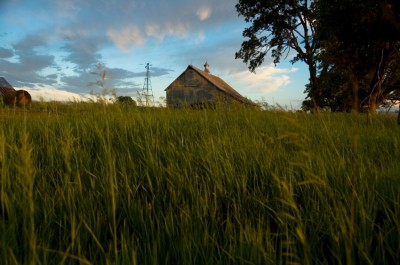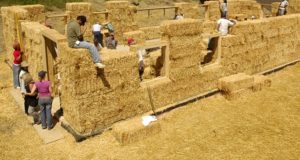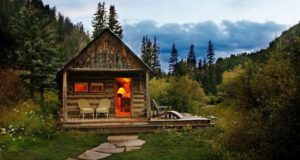 Crime, noise, pollution, taxes, traffic and competition for resources — for all of these reasons and more there is a growing trend among people to seek a different kind of life. That is, a life less dependent upon urban utilities and questionable sources for basic essentials such as water and food.
Crime, noise, pollution, taxes, traffic and competition for resources — for all of these reasons and more there is a growing trend among people to seek a different kind of life. That is, a life less dependent upon urban utilities and questionable sources for basic essentials such as water and food.
Over the past few decades, rural living has slowly vanished from the collective human experience. Perceptions of more predictable and stable lives in and near big cities drove this change, but what once seemed steady and safe has become increasingly unpredictable and perplexing. With the increase of uncertainties in urban and suburban living on the rise, the balance has begun to sway more toward the rural experience of the past.
Make no mistake: The reality of making a living away from urban centers and on one’s own land in a more self-sustainable environment does not come without challenges. All such challenges can be overcome, but it takes time and patience.
The transition into a new way of life requires a fresh look at many of the behaviors that urban life has produced.
Near the top of this list is the need to reduce and eliminate debt. Carrying large mortgages, credit card balances and other lines of credit has become a normal way of life in and around the big cities. For those who want to break free from “the norm,” debt elimination should be the first step.
No amount of research and planning for rural and off-grid living can succeed if old ideas about debt are carried into it.
New book reveals how to keep this “gangster” economy from murdering your money…
Although paying off debt can be time-consuming and feel quite painful to those not accustomed to it, the steps and patience pay off more dividends than simply having less or no debt. Paying down those large balances does take time and commitment, but this is a tremendous skill to have when taking the first “real” steps onto the off-grid life. The period of debt elimination also provides a wonderful opportunity for research and investigation into “the dream.” The notion that a person who spent a lifetime in the city can successfully transition into rural life quickly is false. It takes time to learn and develop the skills and attitudes needed.
Time is different in the forests and pastures than it is in the concrete jungle. Sometimes things just don’t go the way they were planned and there are much fewer options to fall back on in a rural setting. To add the burden of debt into the equation is a recipe for disaster, but it can be avoided.
Some people may find that they need to take on a second (or third) job in order to make a sizeable impact on their debt, but this, too, is a valuable lesson for the rural life. Tending one’s own land and livestock is not a 9 to 5 experience. It can take long hours, day and night, to manage the daily activities of a homestead. In addition, the extra work can expose many of the wrong ideas people have about time, money and resources. There is nothing more eye-opening into the habits of excess than the effort expelled trying to eliminate the resulting debt.
Whatever method is used to pay off debt, the most crucial step is to keep the dream of self-sufficiency alive. There is no doubt that delayed gratification is a lost art, but it is an essential component of homestead life. No matter how long it takes and how hard one has to work, in the end when the challenge has been met, there is no greater feeling. It may feel like you are never going to get there during your debt repayment phase, but keep your dream at the forefront of your thoughts.
Accomplishment is redefined when it isn’t achieved on credit, but instead from one’s own hard work, dedication and initiative.
Sign up for Off The Grid News’ weekly email and stay informed about the issues important to you
 Off The Grid News Better Ideas For Off The Grid Living
Off The Grid News Better Ideas For Off The Grid Living




